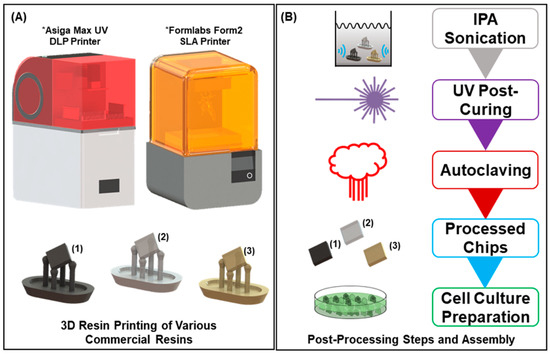3D-Printed Biosensors
A topical collection in Biosensors (ISSN 2079-6374).
Viewed by 5751Editor
Topical Collection Information
Dear Colleagues,
While inkjet printing has been applied as a surface functionalization process over the past decade, recent advances in structural, functional, and biological materials printing capabilities and processes provide new opportunities in biosensor design, fabrication, integration, and application. This Special Issue is dedicated to recent progress in 3D-printed biosensors. Original research articles reporting advances in 3D-printed biosensor transduction elements such as electrodes and stimuli-responsive materials, 3D-printed biosensor-integrated microfluidic systems such as biosensor-integrated tissue and organ chips, 3D-printed hydrogel-based biosensors, and applications of 3D-printed biosensors are encouraged. Related studies beyond these topics that report advances in 3D-printed biosensors and biosensing using 3D-printed platforms are encouraged.
This topic is central to describing the emerging landscape of manufacturing processes for biosensor fabrication, specifically expanding the use of additive manufacturing processes for biosensor design, fabrication, and application.
Dr. Blake N. Johnson
Collection Editor
Manuscript Submission Information
Manuscripts should be submitted online at www.mdpi.com by registering and logging in to this website. Once you are registered, click here to go to the submission form. Manuscripts can be submitted until the deadline. All submissions that pass pre-check are peer-reviewed. Accepted papers will be published continuously in the journal (as soon as accepted) and will be listed together on the collection website. Research articles, review articles as well as short communications are invited. For planned papers, a title and short abstract (about 100 words) can be sent to the Editorial Office for announcement on this website.
Submitted manuscripts should not have been published previously, nor be under consideration for publication elsewhere (except conference proceedings papers). All manuscripts are thoroughly refereed through a single-blind peer-review process. A guide for authors and other relevant information for submission of manuscripts is available on the Instructions for Authors page. Biosensors is an international peer-reviewed open access monthly journal published by MDPI.
Please visit the Instructions for Authors page before submitting a manuscript. The Article Processing Charge (APC) for publication in this open access journal is 2700 CHF (Swiss Francs). Submitted papers should be well formatted and use good English. Authors may use MDPI's English editing service prior to publication or during author revisions.
Keywords
- biosensors
- 3D printing
- multi-material printing
- bioprinting
- microextrusion
- inkjet
- lab-on-a-chip
- organ-on-a-chip
- bio-ink
- antibody–antigen
- detection
- assay







